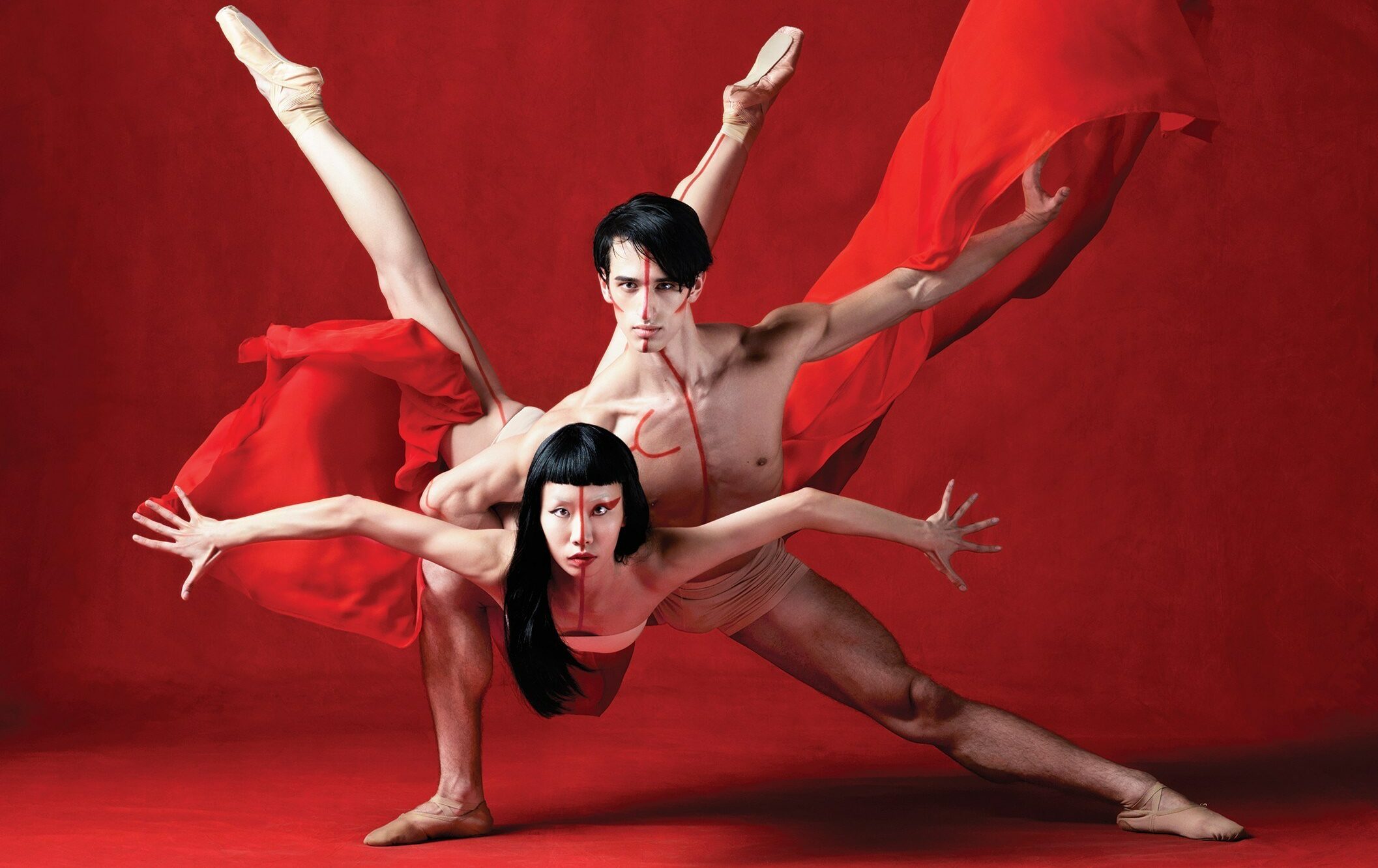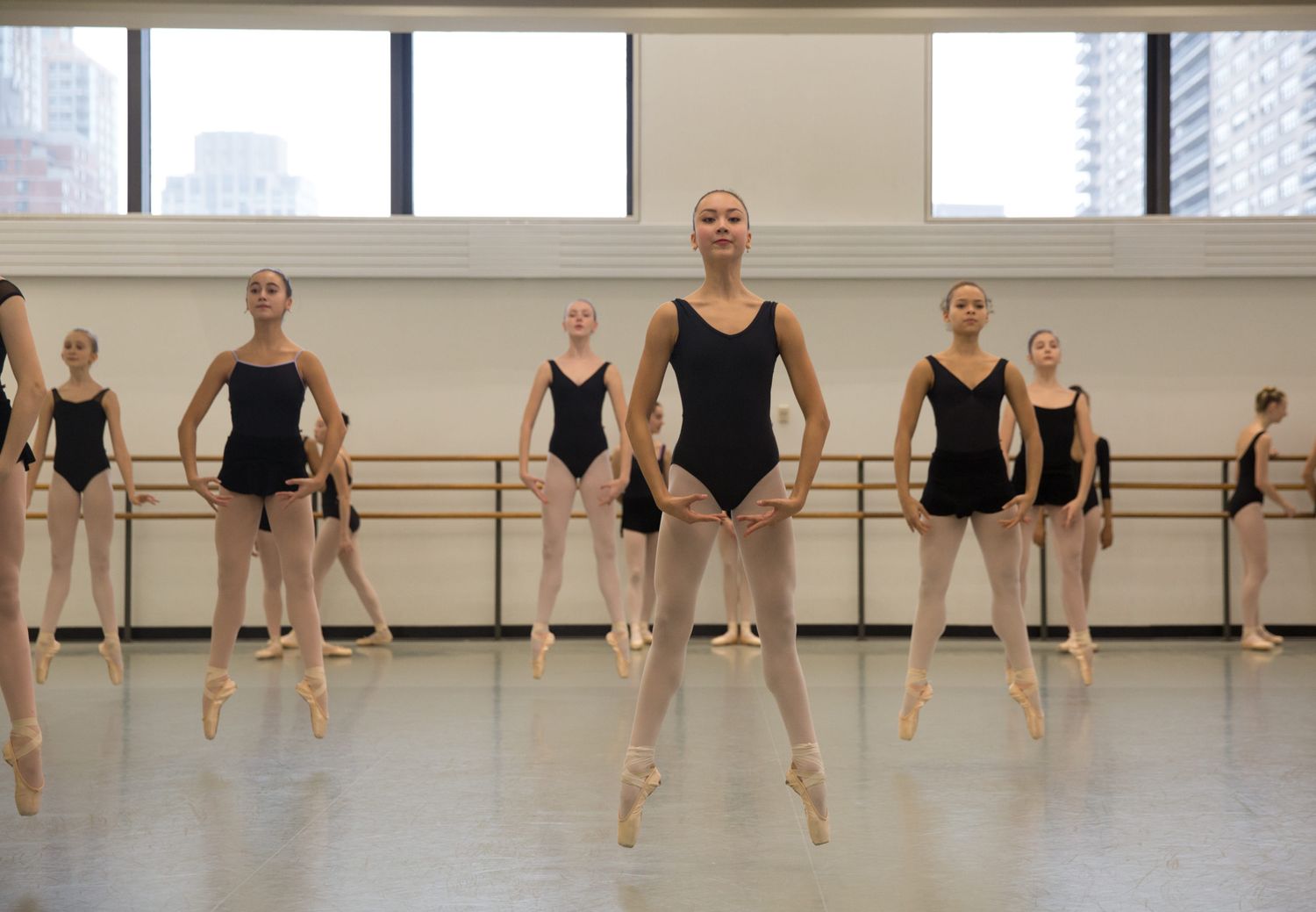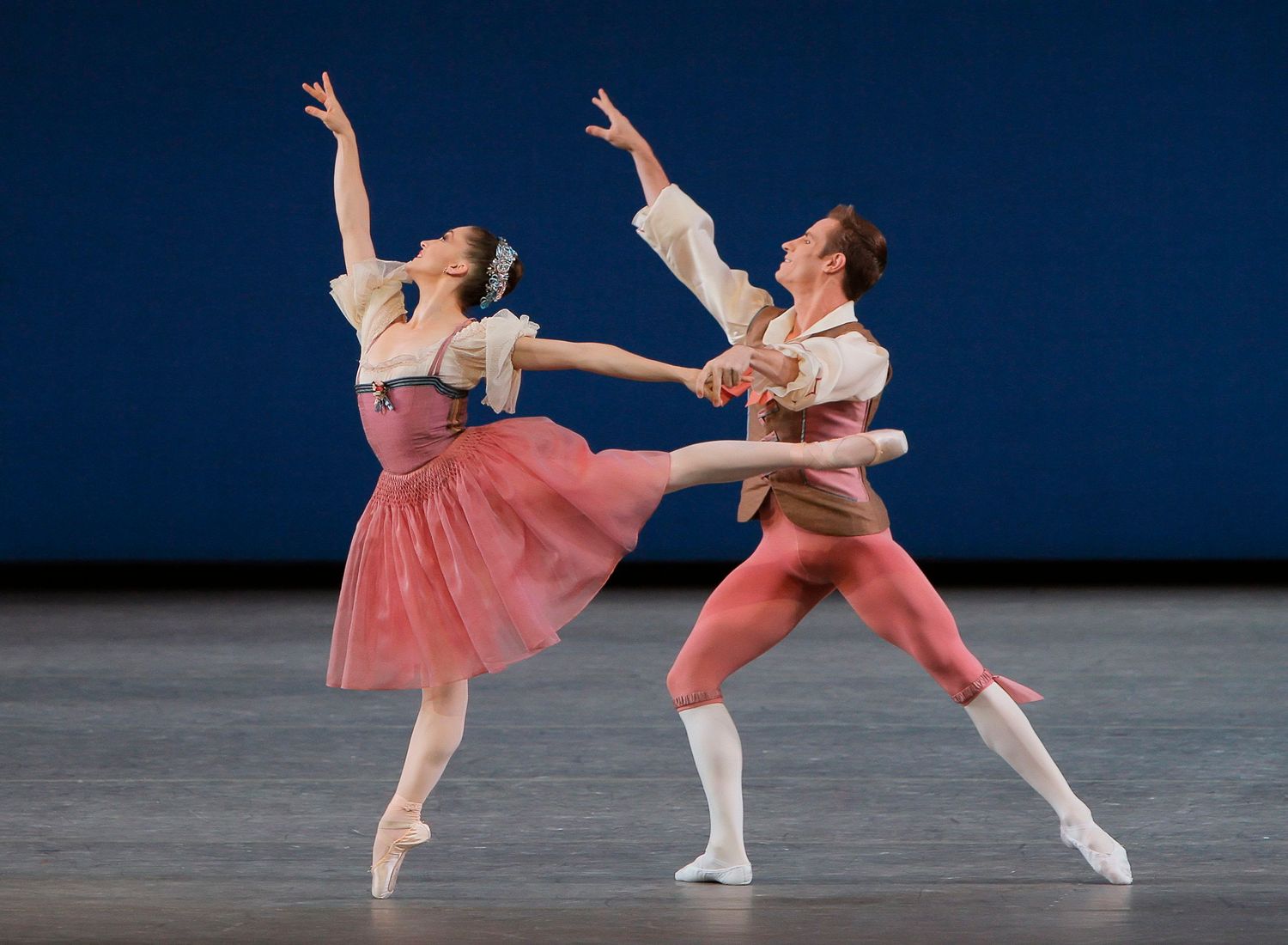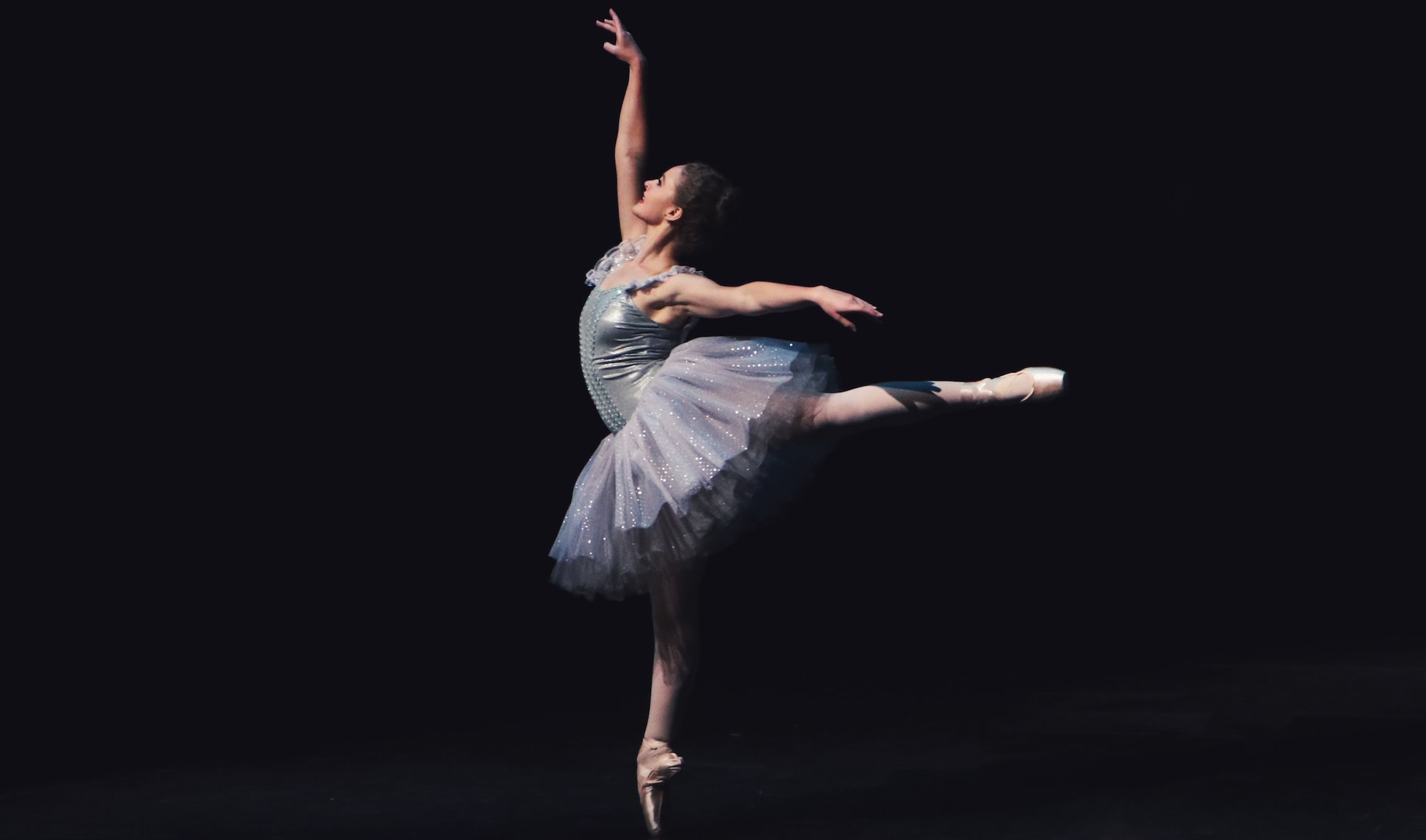Home>Events & Info>Ballet>What Is The Story Told In The Ballet The Rite Of Spring?


Ballet
What Is The Story Told In The Ballet The Rite Of Spring?
Modified: January 22, 2024
Discover the captivating story told through the mesmerizing choreography and music of Stravinsky's groundbreaking ballet, The Rite of Spring.
(Many of the links in this article redirect to a specific reviewed product. Your purchase of these products through affiliate links helps to generate commission for AudioLover.com, at no extra cost. Learn more)
Table of Contents
Introduction
Ballet is a beautiful and expressive art form that has captivated audiences for centuries. Among its many notable productions, “The Rite of Spring” holds a special place. Composed by Igor Stravinsky and premiered in 1913, this ballet is renowned for its innovative music and powerful storytelling.
The story told in “The Rite of Spring” takes on a compelling, primal theme that is guaranteed to leave a lasting impression. It explores the ancient rituals of a pagan society, delving into themes of sacrifice, rebirth, and the cyclical nature of life. This groundbreaking ballet combines music, dance, and narrative to create a visceral experience that continues to resonate with audiences today.
In this article, we will delve into the story and significance of “The Rite of Spring,” providing a comprehensive overview of its plot and the themes explored. Whether you are a ballet enthusiast or simply intrigued by this remarkable production, this article will serve as a guide to understanding and appreciating the story behind “The Rite of Spring.”
Background of “The Rite of Spring”
The story of “The Rite of Spring” begins with its visionary creator, Igor Stravinsky, who composed the music for the ballet. Stravinsky was a Russian composer known for his groundbreaking and avant-garde approach to music. He collaborated with the renowned ballet impresario Sergei Diaghilev and his Ballets Russes to bring this ambitious production to life.
When “The Rite of Spring” was first performed in Paris on May 29, 1913, it caused a sensation and ignited a scandal. The audience, unprepared for the unconventional music and daring choreography, responded with everything from outrage to admiration. The premiere was marked by protests, arguments, and even physical altercations among audience members.
One of the reasons for the intense reaction was the innovative nature of the music. Stravinsky’s composition was characterized by its dissonant harmonies, rhythmic complexities, and unconventional melodies. It broke away from traditional classical music, pushing boundaries and challenging traditional notions of musical structure.
The choreography, by Vaslav Nijinsky, also defied conventions. Nijinsky’s movements were angular, jerky, and seemingly primitive. He incorporated elements of Russian folk dance and pagan rituals, presenting a raw and visceral interpretation of the story.
The plot and imagery of “The Rite of Spring” draw inspiration from Russian folk traditions, as well as ancient pagan rituals and beliefs. Stravinsky and Nijinsky sought to capture the essence of these primitive ceremonies, exploring themes of fertility, sacrifice, and the cycle of nature’s renewal.
Despite the initial controversy surrounding its premiere, “The Rite of Spring” went on to become one of the most influential ballets of the 20th century. Its groundbreaking music and choreography paved the way for new artistic movements and challenged the limits of what could be achieved in both ballet and music.
Today, “The Rite of Spring” continues to be performed by ballet companies around the world, captivating audiences with its innovative storytelling and powerful themes. Its enduring legacy serves as a testament to the visionary minds of Stravinsky and Nijinsky, and their willingness to push artistic boundaries.
Synopsis of “The Rite of Spring”
“The Rite of Spring” is divided into two acts, each depicting different aspects of the ancient pagan rituals and the cycle of life and death.
Act 1: The Adoration of the Earth
The ballet opens with a scene depicting a primitive society gathering in anticipation of the arrival of spring. The dancers, representing various tribes, perform ritualistic movements that celebrate nature’s awakening. As the ceremony progresses, a young maiden is chosen as a sacrificial offering to ensure a bountiful harvest.
Throughout the act, the dancers engage in frenzied and energetic movements, reflecting the primal nature of the rituals. The music, characterized by its complex rhythms and dissonant chords, creates a sense of urgency and primal energy.
Act 2: The Sacrifice
The second act of “The Rite of Spring” revolves around the sacrifice of the chosen maiden. The stage transforms into a dark and mysterious forest, symbolizing the sacred and mystical realm of the gods.
The chosen maiden dances a solo, embodying the struggle and acceptance of her fate. As she moves with grace and vulnerability, the tribe gathers around her, culminating in a climactic ensemble dance. The choreography becomes more aggressive and chaotic, representing the intensity of the sacrificial ceremony.
With each movement, the maiden’s strength wanes, and she eventually collapses and meets her fate. This sacrificial act is believed to renew the land and ensure the continuation of life for the tribe. The ballet ends with a powerful and haunting resolution, leaving the audience with a sense of awe and contemplation.
“The Rite of Spring” presents a vivid portrayal of ancient rituals and the themes of sacrifice, renewal, and the cyclical nature of life. It blends music, dance, and storytelling to create a mesmerizing and thought-provoking experience that continues to captivate audiences worldwide.
Act 1: The Adoration of the Earth
In “The Rite of Spring,” Act 1, titled “The Adoration of the Earth,” sets the stage for the ancient rituals and the awakening of nature. This act showcases the vibrant and energetic celebration of the arrival of spring.
The act begins with the stage transformed into a primitive gathering of tribes, each with their own rituals and dances. The music, composed by Igor Stravinsky, serves as a powerful backdrop, with its complex rhythms and dissonant harmonies reflecting the primal energy of the scene.
The dancers move with a frenzied and exhilarating agility, their bodies contorting and pulsating in harmony with the music. Their movements embody the essence of nature’s awakening, from the sprouting of plants to the emergence of animals from their winter hibernation.
As the ritual progresses, a young maiden is selected as the sacrificial offering to the gods. She becomes the focal point of the tribe’s celebration, representing the embodiment of fertility and the hope for a bountiful harvest. The chosen maiden dances with grace and allure, her movements embodying both vulnerability and strength.
The energy in the act builds as the dancers become more immersed in the ritualistic fervor. The complexity of the choreography, characterized by primal jumps, leaps, and rapid turns, reflects the primal nature of the tribes and their deep connection with the earth.
As Act 1 concludes, the stage is filled with a sense of anticipation and reverence. The tribes gather around the chosen maiden, their movements intensifying as they prepare for the next act—the sacrificial ceremony. Act 1 of “The Rite of Spring” serves as a mesmerizing display of primal energy and the adoration of nature, setting the stage for the dramatic events that will unfold in Act 2.
Act 2: The Sacrifice
In Act 2 of “The Rite of Spring,” titled “The Sacrifice,” the story takes a dramatic turn as the chosen maiden fulfills her role as a sacrificial offering. The act delves into the dark and primal realm of ancient rituals, culminating in a powerful and intense climax.
The stage transforms into a mystical and eerie forest, symbolizing the sacred space where the sacrificial ceremony unfolds. The lighting creates an atmosphere of mystery and suspense, intensifying the emotional journey of the characters.
The chosen maiden takes center stage, dancing a solo that embodies her internal struggles and acceptance of her fate. Her movements are filled with vulnerability and grace, reflecting the weight of the sacrificial ritual upon her. As she moves, the tribe gathers around her, their movements growing more aggressive and chaotic, exemplifying the fierce energy of the ceremony.
As the dance progresses, the maiden’s strength wanes. She is depicted as both a willing participant and a victim of the ritual, torn between her duty to the tribe and her own fear of death. The choreography becomes more intense and physically demanding as her ultimate fate approaches, pushing the boundaries of human endurance.
The climax of the act is marked by a collective ensemble dance, in which the entire tribe engages in a display of wild and frenzied movements. The dancers’ bodies intertwine and collide, reflecting the chaotic nature of the ritual and the primal instincts guiding their actions.
With each movement and expression, the chosen maiden’s journey reaches its climax. Faced with the inevitability of her sacrifice, she collapses, her body surrendering to its fate. The act concludes with a haunting resolution, leaving the audience with a sense of awe and contemplation of the cycle of life and death.
Act 2 of “The Rite of Spring” delves into the depths of human sacrifice, exploring primal instincts and the cyclical nature of life. Through powerful choreography and evocative music, this act leaves a lasting impression, provoking deep introspection and sparking conversations about the human condition and our connection to ancient rituals.
Themes Explored in “The Rite of Spring”
“The Rite of Spring” is a ballet that delves into deep and thought-provoking themes, igniting discussions about the human condition, ancient rituals, and the cycle of life. Through its powerful storytelling and evocative choreography, the ballet explores the following themes:
Primal Instincts: At the heart of “The Rite of Spring” is the exploration of humanity’s primal instincts. The dance movements and the raw energy exhibited by the dancers reflect the primal nature of the tribes and their deep connection to the earth. This exploration of instinctual behavior forces viewers to confront their own primitive impulses and question the thin veneer of civilization that separates us from our animalistic origins.
Sacrifice and Renewal: The concept of sacrifice plays a central role in the ballet. The chosen maiden willingly or unwillingly offers herself as a sacrificial offering in the hope of ensuring the prosperity and rebirth of her tribe. This theme challenges the audience’s understanding of sacrifice and prompts contemplation on the sacrifices we make in our own lives for the greater good.
The Cyclical Nature of Life: “The Rite of Spring” also explores the cyclical nature of life, particularly the connection between death and rebirth. The ballet’s portrayal of ancient rituals and the changing seasons serves as a vivid reminder that life is a continuous cycle of growth, decay, and renewal. It prompts reflection on the impermanence of existence and the importance of embracing change.
Connection to Nature: Nature is a significant theme throughout the ballet. The rituals and movements of the dancers embody the awakening of nature and humanity’s deep connection to the earth. As viewers, we are reminded of our place in the natural world and our interdependence with the environment. This theme invites us to reflect on our responsibility towards the planet and our role in preserving its beauty and resources.
Tradition versus Innovation: Another theme explored in “The Rite of Spring” is the tension between tradition and innovation. The ballet’s groundbreaking music and choreography challenged the norms of the time, provoking both admiration and outrage from audiences. This theme invites reflection on the importance of pushing boundaries and challenging established norms to progress and evolve as individuals and as a society.
By delving into these themes, “The Rite of Spring” pushes the boundaries of storytelling through ballet and provokes profound contemplation on the human condition and our place in the world. It remains a timeless work that continues to inspire and challenge audiences with its exploration of these deep and universal themes.
Interpretations of the Story
“The Rite of Spring” is a ballet that has sparked numerous interpretations and discussions among audiences, scholars, and critics. Its rich symbolism and primal themes have led to a range of intriguing interpretations. Here are some of the key interpretations of the story:
Primal Awakening and Ritual: One interpretation sees “The Rite of Spring” as a depiction of humanity’s awakening to its primal instincts and the rituals that accompany this process. The ballet explores the raw, untamed power that lies within us and highlights the importance of embracing our primal nature as a means of achieving personal and societal transformation.
Conflict and Sacrifice: Another interpretation focuses on the inherent conflict between individual desires and the needs of the community. The chosen maiden’s sacrifice represents the willingness to give up personal aspirations and desires for the greater good. This interpretation emphasizes the themes of duty, communal responsibility, and the sacrifices required for the well-being of society.
Nature’s Seasonal Transformation: Some interpretations view “The Rite of Spring” as a representation of the changing seasons and the cyclical nature of life. The ballet reflects the rebirth of nature in spring, the abundance of summer, the decline and decay of autumn, and the barrenness of winter. It portrays the inevitability of these seasons and the continuous cycle of life and death.
Female Empowerment and Liberation: A feminist interpretation of “The Rite of Spring” focuses on the portrayal of the chosen maiden as a symbol of female empowerment and liberation. The ballet explores the awakening and agency of women within patriarchal societies, highlighting their strength and resilience in the face of societal expectations and limitations.
Artistic Innovation and Rebellion: Given the controversial reception of the ballet, an interpretation revolves around the theme of artistic rebellion and innovation. “The Rite of Spring” challenged traditional ballet conventions, both musically and choreographically, and sparked a revolutionary movement in the art world. This interpretation celebrates the courage to defy societal norms and push boundaries in order to create groundbreaking art.
These interpretations represent just a few of the many ways that “The Rite of Spring” has been understood and analyzed. The ballet’s open-ended and symbolic nature invites viewers to engage with its story and themes and discover their own personal and cultural interpretations.
Conclusion
“The Rite of Spring” is a ballet that continues to captivate audiences with its powerful storytelling, evocative music, and groundbreaking choreography. Its primal themes, ancient rituals, and exploration of the cycle of life and death make it a timeless masterpiece of the ballet repertoire.
Through the innovative music of Igor Stravinsky and the daring choreography of Vaslav Nijinsky, “The Rite of Spring” pushes the boundaries of artistic expression. It challenges traditional notions of ballet and classical music, provoking intense reactions and sparking conversations about the human condition.
As we journey through the acts of “The Rite of Spring,” we are immersed in a world of primal instincts, sacrifice, and the power of nature. The adoration of the earth gives way to the sacrificial ceremony, where the chosen maiden becomes a symbol of both vulnerability and strength.
Themes such as primal instincts, sacrifice, the cyclical nature of life, and our connection to nature are explored within the ballet. These themes invite introspection and prompt discussions on various topics, including the human experience, societal responsibilities, and the ever-changing relationship between tradition and innovation.
The interpretations of “The Rite of Spring” are diverse and multifaceted. From primal awakening to female empowerment, the ballet invites viewers to personally connect with its story and find their own meaning within its artistic tapestry.
“The Rite of Spring” holds a significant place in the history of ballet, challenging conventions and igniting inspiration for future generations of artists. Its enduring legacy continues to resonate with audiences, reminding us of the power of art to provoke emotions, stimulate thought, and push boundaries.
Whether witnessing “The Rite of Spring” for the first time or revisiting its intricate movements, the ballet leaves an indelible impression. It beckons us to reflect on our own existence, embrace the primal energy within, and appreciate the ever-changing cycles of life and nature.











